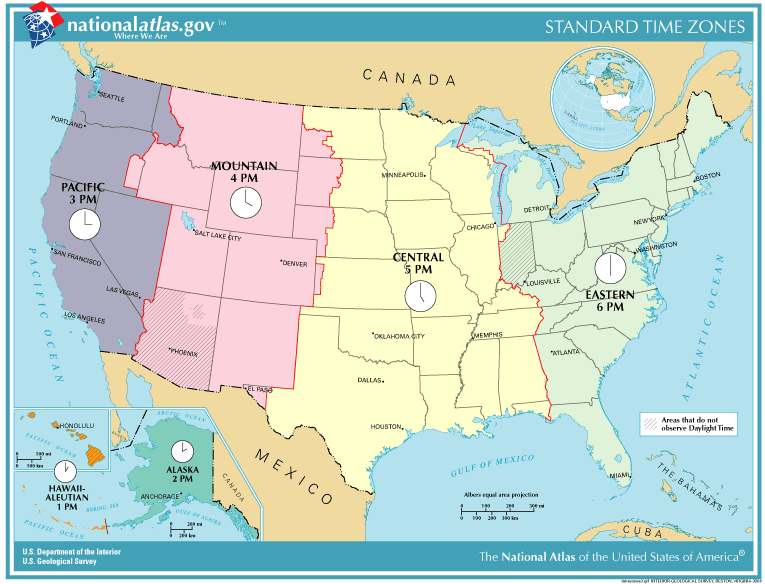Hawaii-Aleutian Standard Time (HAST) or UTC/GMT -10

Time Zones in the USA.
The Hawaii-Aleutian Time Zone observes Hawaii-Aleutian Standard Time (HAST), which is minus ten hours from Greenwich Mean Time (UTC/GMT -10). The time in this zone is based on the mean solar time of the 150th meridian west of the Greenwich Observatory.
The name of the time zone is a combination of the two areas where it is followed: Hawaii and the portion of Alaska's Aleutian Islands west of 169° 30′ W longitude. During daylight saving time (DST) the Alaskan portion of the time zone observes Hawaii-Aleutian Daylight Time (HADT), during this time period the time difference from GMT is -9 hours. Hawaii part of the time zone is following standard time year-round (UTC/GMT -10).
Daylight Saving Time Information
Hawaii does not follow daylight saving time while Aleutian Islands do. For the Aleutian Islands the time changes are as follows:
 To daylight saving time; from HAST to HADT at 02:00 LST to 03:00 LDT on the second Sunday in March.
To daylight saving time; from HAST to HADT at 02:00 LST to 03:00 LDT on the second Sunday in March.
 To standard time; from HADT to HAST at 02:00 LDT to 01:00 LST on the first Sunday in November.
To standard time; from HADT to HAST at 02:00 LDT to 01:00 LST on the first Sunday in November.
North American Time Zones
The time zones in North America, in the west from Hawaii and Alaska to the east cost of USA and Canada and all the way to Nova Scotia and Newfoundland.
| Hours from UTC/GMT | Standard Time | Daylight Saving Time |
| -10 | Hawaii-Aleutian | |
| -9 | Alaska | Hawaii-Aleutian |
| -8 | Pacific | Alaska |
| -7 | Mountain | Pacific |
| -6 | Central | Mountain |
| -5 | Eastern | Central |
| -4 | Atlantic | Eastern |
| -3:30 | Newfoundland | |
| -3 | Atlantic | |
| -2:30 | Newfoundland |
Time zones in North America.
GMT and UTC
Greenwich Mean Time (GMT) is originally referring to mean solar time at the Royal Observatory in Greenwich, London. GMT and Coordinated Universal Time (UTC) can be seen equivalent when fractions of a second are not important.
